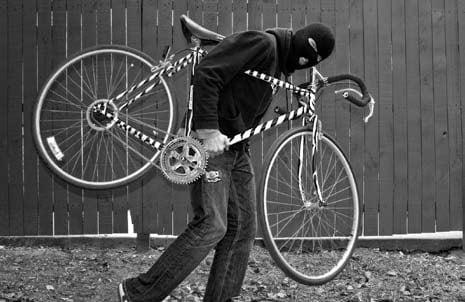Bike Theft Can Ruin Lives: I Know It, and Something Needs to Change
Bike theft is often dismissed as a minor nuisance, a mere inconvenience in the hustle and bustle of urban life. However, for countless individuals, the loss of a bicycle transcends the material; it can disrupt daily routines, hinder transportation, and even threaten livelihoods. As cycling gains popularity as a sustainable mode of transport, the alarming rise in bike thefts raises pressing questions about urban safety, infrastructure, and community resilience. In this article, we delve into the profound impact of bike theft on individuals and neighborhoods, exploring personal stories that illustrate the emotional and economic toll of this pervasive issue. With growing calls for systemic change, it’s time to address the urgent need for enhanced security measures, better public awareness, and community engagement to protect cyclists and foster a safe environment for all.
The Devastating Impact of Bike Theft on Communities and Individuals
Bicycle theft is not just a minor inconvenience; it can have far-reaching consequences that ripple through communities and profoundly affect individuals. For many, a bike is more than a mode of transport; it represents freedom, independence, and livelihood. When a bike is stolen, the immediate reaction often includes feelings of violation and loss, which can lead to broader societal impacts. In urban areas where cycling is a primary means of commuting, theft can disrupt not only personal routines but also community cohesion. People may feel less safe knowing that theft is rampant, leading to reduced cycling, which in turn affects local businesses that rely on foot and bike traffic.
Furthermore, the implications of bike theft extend to economic factors. Individuals who rely on bikes for work or errands may face challenges finding alternative transportation, often leading to increased expenses or lost job opportunities. The following points highlight the psychological and financial toll on victims:
- Emotional distress: Victims may experience anxiety or a sense of insecurity.
- Financial burden: The cost of replacement can be significant, especially for high-quality bicycles.
- Social isolation: Reduced access to transportation can lead to a withdrawal from community activities.
As alarming as these issues are, some municipalities have begun to address bike theft through innovative solutions. Initiatives such as community watch groups, enhanced bike parking security, and educational programs on theft prevention are gaining traction. The following table summarizes recent strategies that have been implemented across various communities:
| Community | Initiative | Impact |
|---|---|---|
| New York City | Bike Registration Program | Increased chances of recovery by 30% |
| San Francisco | Community Bike Lock Workshops | Raised awareness and improved security practices |
| Chicago | Secure Bike Parking Stations | Reduced theft incidents in targeted areas by 20% |
Effective Strategies to Prevent Bike Theft and Enhance Security Measures
Implementing robust security measures can significantly reduce the risk of bike theft. By choosing high-quality locks, cyclists can deter thieves effectively. It’s recommended to use a combination of U-locks and chain locks for added security. Additionally, locking your bike in well-lit, visible areas increases the chances of deterring potential thieves. Consider registering your bike with local authorities or bike registries; this not only enhances recovery chances but also acts as a deterrent for thieves aware of the tracking system. Finally, consider investing in GPS tracking devices that can be discreetly attached to your bicycle, allowing for real-time tracking if theft occurs.
In communities where bike theft is prevalent, collective action can greatly enhance overall security. Form local bike security groups to share information about suspicious activities and create safe parking zones. Organize workshops to educate cyclists on the best locking techniques and the importance of being vigilant. Some local governments are also implementing secure bike parking facilities in high-traffic areas, which can serve as a valuable deterrent. Below is a summary of effective neighborhood initiatives:
| Initiative | Description |
|---|---|
| Community Lock-Up Events | Engage locals to securely lock bikes properly. |
| Bike Watch Programs | Create networks for reporting suspicious activity. |
| Secure Parking Racks | Install locked bike racks at public places. |
Advocacy for Policy Changes to Combat Rising Theft Rates in Urban Areas
The rise in bike thefts in urban centers not only disrupts daily commutes but also poses a significant emotional toll on victims. When a bicycle is stolen, it often feels like a personal violation, leading many individuals to feel unsafe in their own neighborhoods. Authorities must take urgent action to implement more robust policies that increase protection and security for cyclists. It is crucial for local governments to prioritize resources towards surveillance systems, community programs, and increase police presence in high-theft areas to deter would-be thieves. Residents deserve an environment where they can ride freely without the fear of losing what often represents their independence and livelihood.
Advocacy groups are calling for collaborative efforts between community stakeholders, including local businesses and residential organizations, to develop strategies that provide safer cycling experiences. There is a pressing need to spread awareness about the importance of bike security and establish bike registration programs that could facilitate the recovery of stolen property. The following measures could be considered in policy discussions:
- Enhanced funding for bike patrol units.
- Public awareness campaigns on effective bike locking techniques.
- Incentives for communities that adopt bike-sharing programs.
- Collaboration with nonprofits to provide low-cost locks to vulnerable cyclists.
| Proposed Action | Potential Benefit |
|---|---|
| Increased surveillance | Deterrent for theft |
| Community bike workshops | Education on bike security |
| Partnership with local businesses | Support for cyclists |
| Promotion of successful recovery stories | Boosted community confidence |
The Conclusion
In the face of escalating bike thefts, the implications extend far beyond the loss of a bicycle; they reverberate through communities, affecting mobility, livelihoods, and a sense of safety. As highlighted by personal accounts and rising statistics, the emotional and financial toll of such thefts is profound. For many, a bike is not just a mode of transport but a vital tool for independence, livelihood, and recreation.
In light of these troubling trends, the call for action is louder than ever. Innovations in security technology, community vigilance, and strengthened law enforcement partnerships are crucial steps toward mitigating this pervasive issue. As we continue to advocate for effective solutions, it is imperative that we collectively prioritize the safety and security of our cycling community. Change is not just necessary; it is achievable. Together, we can work towards a future where bike thefts are a thing of the past, preserving the freedom and joy that cycling brings to our lives.











